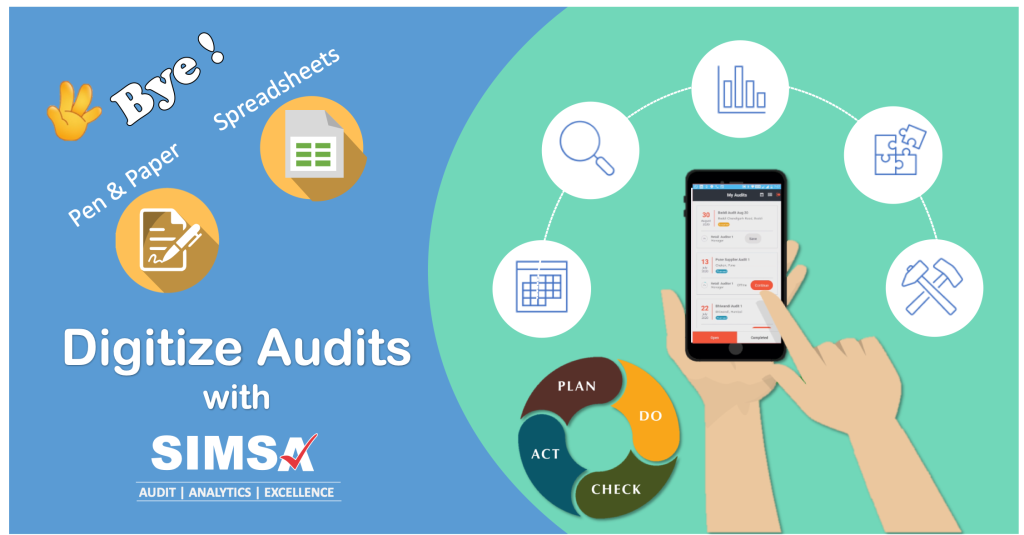Project Audits: The Secret Weapon for Successful Project Management
As projects become more complex and diverse, it becomes increasingly important to conduct project audits. A project audit is an independent review of the project’s performance, progress, and adherence to the plan. The audit is conducted by a third party or internal audit team to ensure the project is on track and meeting its objectives. In this blog, we will discuss the importance of project audits and provide a comprehensive guide to conducting a project audit.
The purpose of the project audit is not to skim through superficial observations but to dive deeper into the processes, checks & controls, people motivation & skills, data management, compliances, cost accounting etc. The objective is to nip the problem in the bud before it starts manifesting in failures of quality, schedule compliance or cost overrun. So audits are not tick in the box but a tool for steering the project in the right direction and taking timely action for course correction.
Importance of Project Audit
A project audit serves several purposes, including:
- Identifying problems early: Project audits identify potential issues early on in the project’s lifecycle, allowing for timely correction and minimizing the impact on the project’s success.
- Ensuring adherence to plan: Audits help ensure that the project team is following the project plan and the project objectives are being met.
- Improving project management processes: Project audits provide insights into project management processes, allowing for improvements to be made in future projects.
- Enhancing stakeholder confidence: A successful project audit can improve stakeholder confidence in the project team’s ability to deliver the project successfully.
- Mitigating Project Risks: Each project audit is an opportunity for reviewing the risks and identifying new risks. The audits test the effectiveness and relevance of risk mitigation plan as well as putting in place additional interventions that may be required.
Steps to Conducting a Project Audit
Step 1: Define the Audit Objectives
The first step in conducting a project audit is to define the audit objectives. This involves identifying the project’s scope, objectives, and deliverables. The audit objectives should be specific, measurable, achievable, relevant, and time-bound (SMART).
Step 2: Select the Audit Team
The audit team should be selected based on their knowledge and experience in project management. The team should include individuals who are not involved in the project to ensure objectivity.
Step 3: Review the Project Documentation
The audit team should review all project documentation, including the project plan, risk management plan, communication plan, and change management plan. The team should also review project reports, status updates, and any other relevant documents.
Step 4: Put together a comprehensive Audit Checklist
The output of the first 3 steps culminates into the audit checklist that ensures all the key aspects of the project deliverables, risks, checks & controls are adequately covered. The audit questions should be structured to dig deeper to help discover the underlying root causes.
Step 5: Observe & Conduct Interviews
The audit team should observe the operations critically for any violations and conduct interviews with key stakeholders, including the project manager, team members, and project sponsors. The interviews should focus on the project’s progress, challenges, and risks.
Step 6: Analyze the Findings
The audit team should analyze the findings from the documentation review and interviews. The analysis should identify any discrepancies between the project plan and actual performance. The team should also identify any areas for improvement in project management processes.
Step 7: Prepare the Audit Report
The audit team should prepare a comprehensive report detailing the findings of the audit. The report should include an executive summary, detailed findings, and recommendations for improvement. The report should be presented to the project manager and stakeholders for review.
How Frequently the Project Audit should be done?
The frequency of project audits can vary depending on the project’s size, complexity, and risk. Generally, project audits should be conducted at key project milestones, such as at the end of each phase or at the project’s completion.
For long-term projects, it may be beneficial to conduct regular interim audits to identify any potential issues and make necessary corrections. The frequency of interim audits can be determined based on the project’s size, complexity, and level of risk.
It’s important to note that project audits should not be seen as a one-time event, but rather as an ongoing process to ensure the project is on track and meeting its objectives. Regular audits help to ensure that the project is being managed effectively and efficiently throughout its entire lifecycle.
Role of Technology in Project Audit
Technology plays a significant role in project audit and can have a major impact on the efficiency and effectiveness of the audit process. Here are some ways in which technology is used in project audit:
- Data Collection and Analysis: Technology can be used to collect and analyze project data, making it easier to identify patterns and trends in project performance. This can include data from project management software, financial systems, and other sources.
- Automated Reporting: With the help of technology, project audit reports can be generated automatically, saving time and effort. This can include dashboards, graphs, and other visualizations that make it easier to understand the data and insights.
- Collaborative Tools: Technology allows project audit teams to collaborate effectively, regardless of their location. This can include online communication and collaboration tools, such as video conferencing, shared project management software, and document management systems.
- Risk Management: Technology can help project audit teams to identify and manage risks more effectively. This can include tools for risk assessment, risk mitigation planning, and monitoring of risk factors.
- Artificial Intelligence: With the help of AI, project audit teams can analyze large amounts of data and identify patterns that may be difficult for humans to spot. This can help to identify areas of concern and improve the accuracy of the audit process.
- Mobile Technology: With the use of mobile devices and apps, project audit teams can work more efficiently and effectively, regardless of their location. This can include mobile project management software, communication apps, and other tools.
Conclusion
In conclusion, project audits are essential to ensuring project success. They provide valuable insights into project management processes and identify potential issues early on in the project’s lifecycle. By following the steps outlined in this blog, project managers can conduct a successful project audit and improve their project management practices. Remember, a successful project audit can improve stakeholder confidence in the project team’s ability to deliver the project successfully, which can have a significant impact on the project’s overall success.



